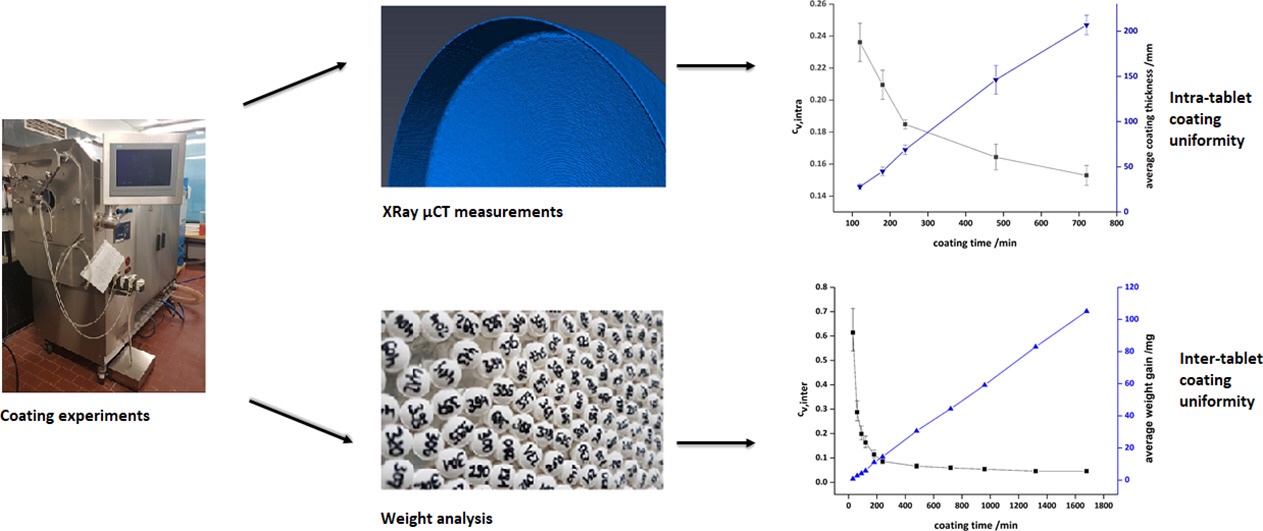Effect of coating time on inter- and intra-tablet coating uniformity

Film tablets are a common oral dosage form. For many of the functions film layers can have on pharmaceutical tablets, a high degree of coating uniformity is required.
In studies on coating uniformity the coefficient of variation is commonly used as a marker. Previous studies regarding the trend were mostly extrapolations from simulations of short coating times. Based on these it was stated that the inter tablet coefficient of variation decreases proportionally to one over the square root of coating time and hence diverge asymptotically towards zero.
Extrapolations of experimental data suggested however a decrease converging to a residual value. Based on these results it can be hypothesized that the coefficient of variation decreases proportionally to one over time towards a residual value. Regarding intra-tablet coating homogeneity, no data on time dependency has been published so far. In this study, three long time coating experiments were performed to test the described hypotheses.
The inter-tablet uniformity was derived gravimetrically, while the intra-tablet data was derived using micro-computed tomography and confocal chromatic thickness determination. Towards the end of the coating experiments, a non-zero plateau of inter-tablet uniformity was reached. Furthermore, the data showed non-random deviations from the hypothesized one-over-square-root-of-time-model.
The data for intra-tablet uniformity showed a non-linear decrease as well, but did not allow falsification of either hypothesis. It was additionally found that the cap-to-band ratio was below one at short coating times and increased to values above 1 during the process, which implies that existing declarations from literature might be limited to certain process durations. More on tablet coating

